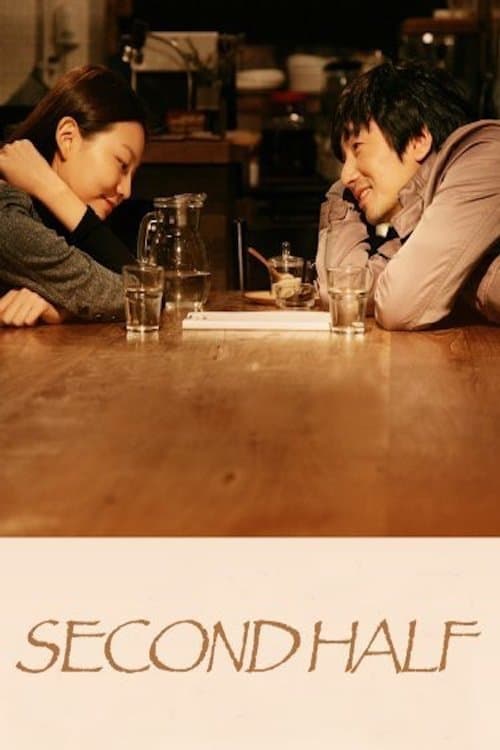
Ask Your Own Question
What is the plot?
What is the ending?
In the ending of "Don't Worry, I'm a Ghost," the main character, a ghost named Sam, helps a young woman named Anna confront her fears and find closure. Sam's journey leads to a poignant moment of self-acceptance and understanding, ultimately allowing him to move on to the afterlife. Anna, having faced her own struggles, begins to embrace life again, symbolizing hope and renewal.
As the film approaches its conclusion, we find ourselves in a dimly lit room where Sam, the ghost, is still grappling with his existence. He has been a guiding presence for Anna, a troubled young woman who has been dealing with her own emotional turmoil. The atmosphere is heavy with unspoken words and unresolved feelings. Sam, who has been lingering in the world of the living, feels a growing urgency to help Anna confront her fears.
In a pivotal scene, Anna sits alone in her room, surrounded by remnants of her past. The walls are adorned with photographs that tell stories of happier times, but they also serve as reminders of her struggles. Sam, invisible to her, watches with a mix of empathy and determination. He knows that Anna needs to face the pain that has been holding her back. He gently nudges her to reflect on her life, encouraging her to confront the memories that haunt her.
As Anna begins to process her emotions, she experiences a series of flashbacks that reveal her past traumas. The scenes shift between her childhood and her present, illustrating the stark contrast between the innocence of youth and the weight of adult responsibilities. Sam, feeling a deep connection to her pain, realizes that he must help her find closure. He whispers words of encouragement, urging her to let go of the guilt and fear that have been suffocating her spirit.
In a climactic moment, Anna stands before a mirror, tears streaming down her face. She confronts her reflection, symbolizing her internal struggle. Sam, now more visible to her, appears as a comforting presence. He reassures her that it's okay to feel lost and that she is not alone. This moment of connection is transformative for both characters. Anna begins to understand that her past does not define her future.
As the emotional weight lifts, Anna takes a deep breath, symbolizing her acceptance of herself and her journey. The room brightens, and the atmosphere shifts from one of despair to hope. Sam, witnessing this transformation, feels a sense of fulfillment. He knows that his purpose has been served. With a bittersweet smile, he prepares to move on, finally ready to embrace the afterlife.
In the final scenes, Sam fades away, leaving Anna with a newfound sense of strength and clarity. She stands tall, looking out of her window at the world beyond, ready to embrace life once more. The camera lingers on her face, capturing the mix of sadness and hope as she takes her first steps toward healing.
The film concludes with a sense of resolution for both characters. Sam has found peace, having helped Anna confront her fears, while Anna is poised to reclaim her life, symbolizing the enduring power of connection and the importance of facing one's inner demons. The screen fades to black, leaving the audience with a lingering sense of hope and the understanding that healing is a journey worth taking.
Is there a post-credit scene?
In the movie "Don't Worry, I'm a Ghost," there is no post-credit scene. The film concludes without any additional scenes or content after the credits roll. The story wraps up with the main character, a ghost named "M," coming to terms with his existence and the connections he has made throughout the film. The focus remains on the emotional resolution of the characters rather than setting up any further narrative.
What role does the setting play in the development of the plot?
The setting, primarily an old, abandoned house, serves as a haunting backdrop that reflects the emotional states of the characters. It is filled with memories and echoes of the past, creating an atmosphere of nostalgia and melancholy. The house becomes a character in itself, influencing the interactions between Sam and Maggie as they navigate their respective traumas.
What is the significance of the character named 'Maggie' in the story?
Maggie is a pivotal character who embodies the emotional struggles of the living and the dead. As a ghost, she represents unresolved issues and the longing for connection. Her interactions with the protagonist, who is also dealing with his own emotional turmoil, highlight themes of love, loss, and the desire for closure.
How does the protagonist, 'Sam', first encounter Maggie?
Sam first encounters Maggie in a moment of vulnerability when he is grappling with his own feelings of isolation and despair. He is drawn to her ethereal presence, which serves as a catalyst for his journey of self-discovery and healing. Their initial meeting is marked by a mix of curiosity and fear, setting the stage for their evolving relationship.
How does Maggie's backstory influence her actions throughout the film?
Maggie's backstory is crucial to understanding her motivations and emotional state. As a ghost, she is trapped between worlds, longing for resolution regarding her untimely death. Her past experiences shape her interactions with Sam, as she seeks to impart wisdom and help him confront his own fears, ultimately driving the narrative forward.
What is the nature of the relationship between Sam and Maggie as the story progresses?
As the story progresses, the relationship between Sam and Maggie deepens from mere acquaintance to a profound bond. Initially, Sam is hesitant and fearful of Maggie's ghostly presence, but as they share their vulnerabilities, they develop a mutual understanding and support for one another. This emotional connection becomes a source of strength for both characters, allowing them to confront their pasts and find healing.
Is this family friendly?
"Don't Worry, I'm a Ghost" is a film that blends elements of comedy and drama, featuring themes of loss, friendship, and the afterlife. While it has a light-hearted premise, there are several aspects that may be considered objectionable or upsetting for children or sensitive viewers:
-
Death and Grief: The film revolves around the concept of ghosts and the afterlife, which may be unsettling for younger audiences. Characters deal with themes of loss and mourning, which could evoke sadness.
-
Ghostly Appearances: The visual representation of ghosts may be frightening for some children. The film includes scenes where ghosts appear unexpectedly, which could be startling.
-
Emotional Turmoil: Characters experience significant emotional struggles, including feelings of loneliness and despair. These themes may resonate deeply and could be distressing for sensitive viewers.
-
Mature Themes: The film touches on adult themes such as existential questions and the impact of unresolved issues from life, which may not be fully comprehensible or appropriate for younger audiences.
-
Mild Language: There may be instances of mild language or suggestive humor that could be deemed inappropriate for children.
Overall, while the film has comedic elements, its exploration of deeper emotional themes and ghostly imagery may not be suitable for all children or sensitive viewers.


























